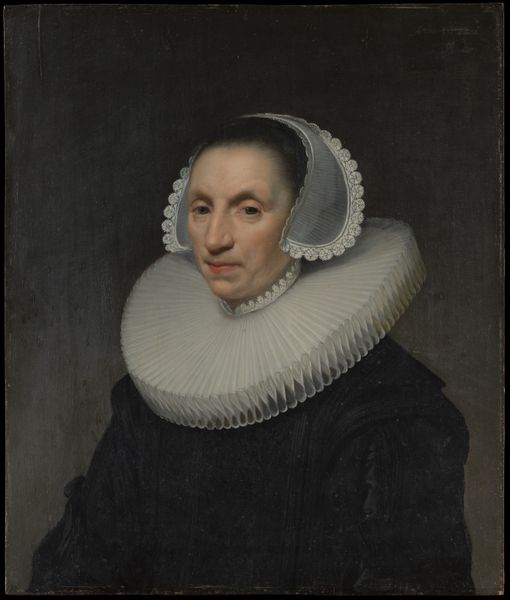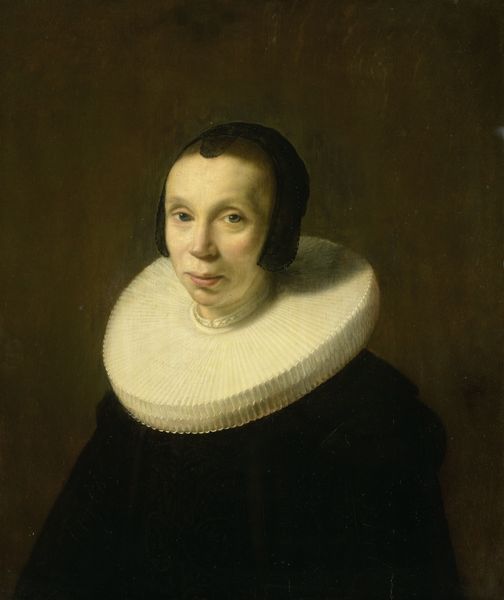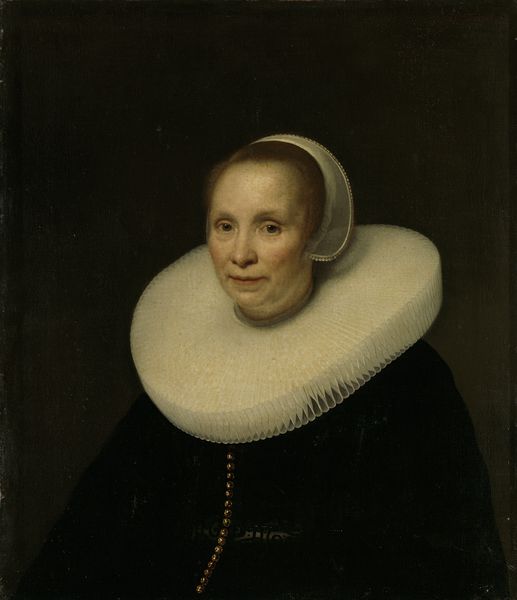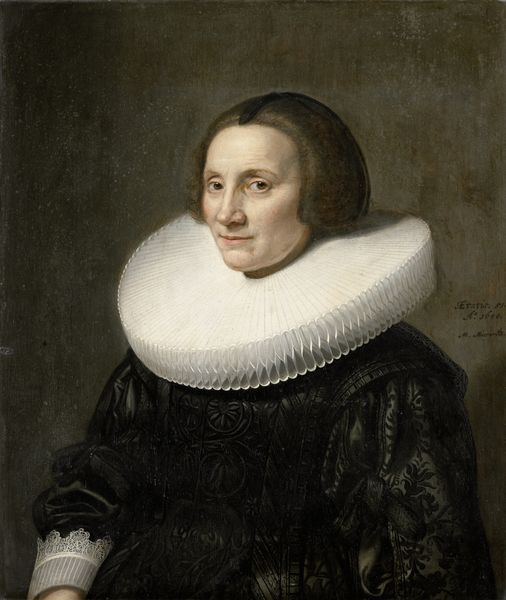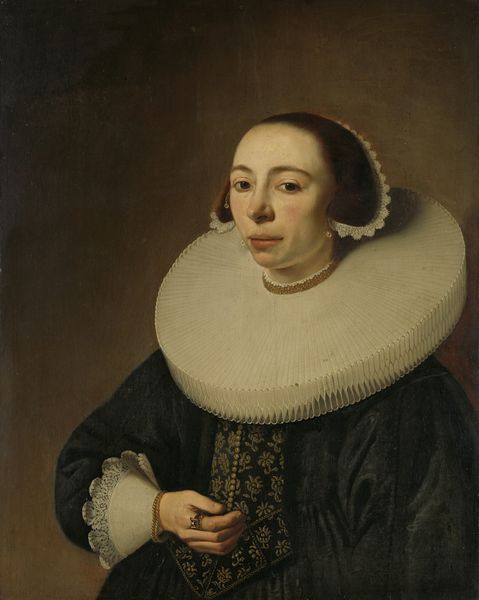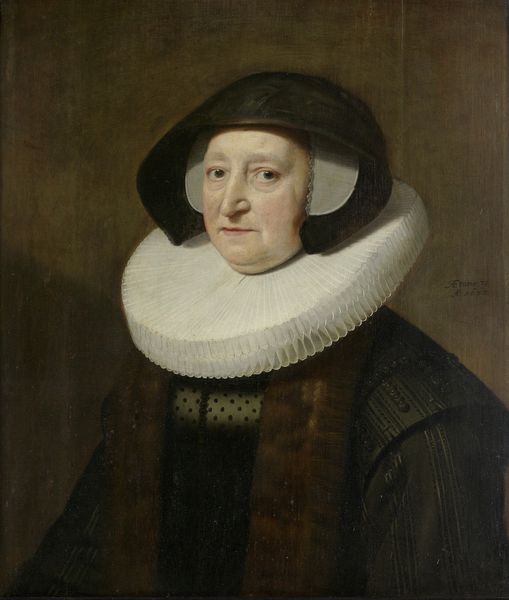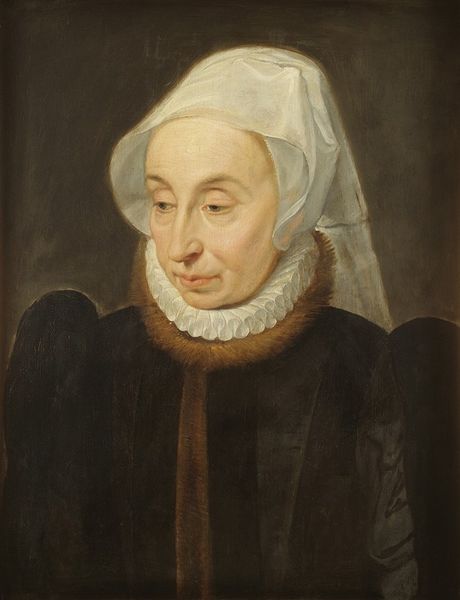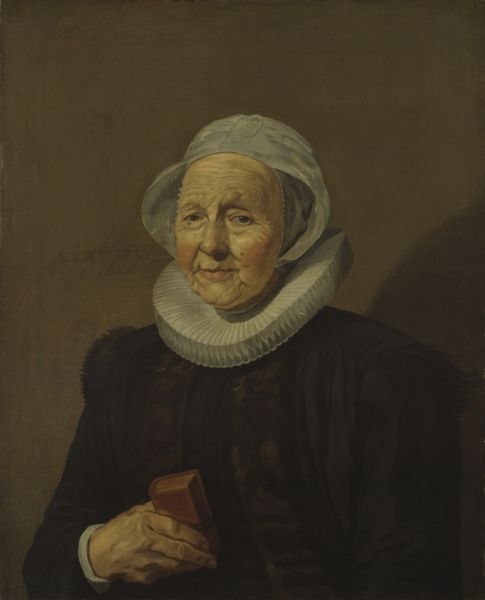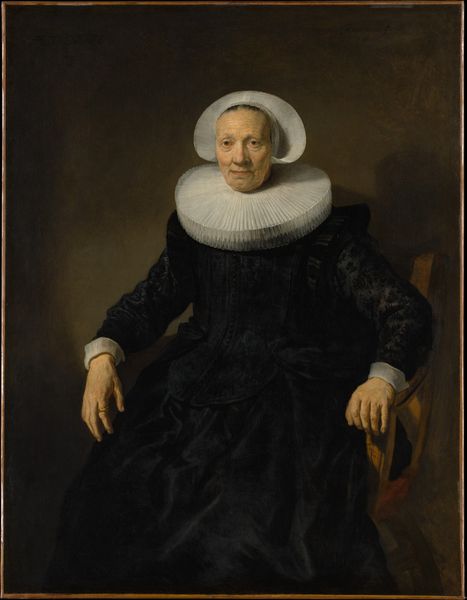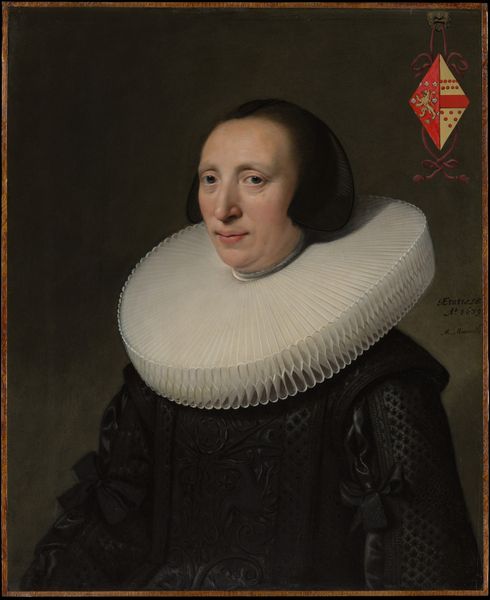
Maria Pietersdr de Leest (d. 1652), Wife of Samuel van Lansbergen 1646
0:00
0:00
bartholomeusvanderhelst
Rijksmuseum
painting, oil-paint
#
portrait
#
baroque
#
dutch-golden-age
#
painting
#
oil-paint
#
figuration
Dimensions: height 68 cm, width 58 cm, depth 6 cm
Copyright: Rijks Museum: Open Domain
Curator: Here we have Bartholomeus van der Helst's 1646 oil painting, "Maria Pietersdr de Leest, Wife of Samuel van Lansbergen." It currently resides in the Rijksmuseum. Editor: Immediately striking! The ruff is intensely crafted and brilliantly white, dominating the portrait with a somewhat overbearing sense of material wealth and societal expectation. Curator: Indeed. Let's unpack that a bit. Consider the context: The Dutch Golden Age. Maria was married into a prominent family, hence the ostentatious display of wealth. The portrait served to communicate not just her likeness, but also her status. Think about how gender roles at the time impacted her agency; this portrait became a statement within a patriarchal structure. Editor: Precisely, but let’s also examine the construction of that statement. The rendering of her dark dress—the layered, deliberate strokes suggest fine tailoring and imported dyes, pointing towards specific trades and economic activity that helped to construct her identity. And that stark white ruff; one has to imagine the hours spent cleaning and maintaining it. It screams production. Curator: I see that, yet I also notice a subtle psychological dimension in the woman's eyes. She isn't merely a passive object. She looks directly at us. Do you see a hint of defiance, perhaps a quiet intelligence pushing against the confines of her role? Her clothing, though a signifier of privilege, becomes something of a uniform in that sense. It sets her apart while paradoxically placing her within specific social constraints. Editor: It's undeniable that van der Helst’s use of oil paints and his attention to fabric texture is superb. I would add that the dark background isn't just a void; the material of the canvas itself has a voice. We get so consumed by representing nobility when we are often viewing a product created by underpaid or enslaved workers in other trades like canvas production and pigment sourcing. Curator: I agree. Looking at it through this lens—a historical and social reading intertwined with a materiality reading—gives us a much more complete appreciation of the painting and its meanings, doesn’t it? Editor: Absolutely. By recognizing labor and socioeconomic systems as inherent pieces of artistic study, we acknowledge that those materials had impacts beyond aesthetic quality.
Comments
No comments
Be the first to comment and join the conversation on the ultimate creative platform.
